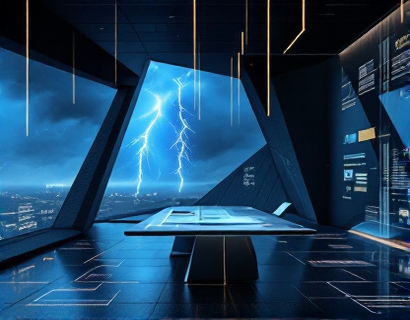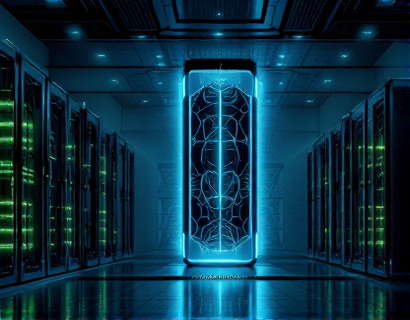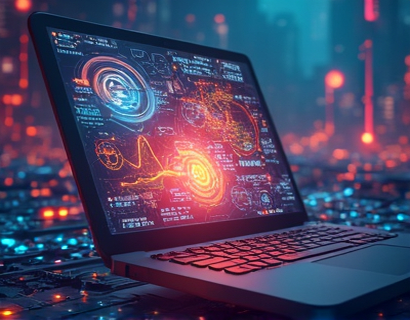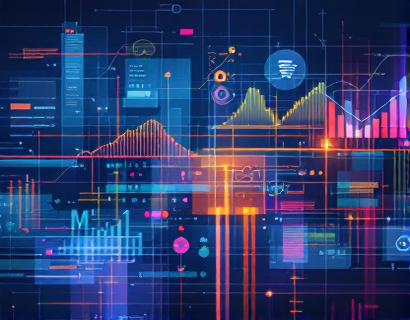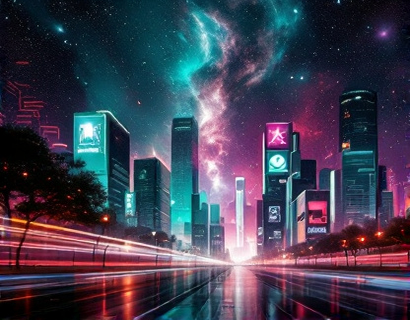Unlocking NFT Potential: Transforming Digital Ownership for Creators and Collectors in the New Era of Digital Innovation
The advent of Non-Fungible Tokens, or NFTs, has revolutionized the way we perceive and interact with digital assets. This transformative technology is not just a passing trend but a fundamental shift in digital ownership, offering unprecedented opportunities for creators and collectors. In this article, we delve into the intricacies of NFTs, exploring how they are redefining digital scarcity, ownership, and community engagement. We will examine the potential of NFTs to enhance the digital experience, providing a comprehensive look at the benefits and possibilities this technology offers.
Understanding NFTs: A New Paradigm of Digital Ownership
At its core, an NFT is a unique digital asset stored on a blockchain, a decentralized digital ledger that ensures transparency, security, and immutability. Unlike cryptocurrencies like Bitcoin or Ethereum, which are fungible and interchangeable, NFTs represent one-of-a-kind items, such as art, music, videos, and even virtual real estate. This uniqueness is what makes NFTs so valuable, as each token is verifiably distinct and cannot be replicated.
The concept of digital ownership has long been a contentious issue in the digital world. With the rise of the internet, digital content has become easily replicable and distributable, often leading to questions of authenticity and ownership. NFTs address this by providing a verifiable proof of ownership, ensuring that the creator and the current owner of a digital asset are clearly identified. This has profound implications for artists, musicians, and other content creators who can now monetize their digital works in ways previously unimaginable.
Enhancing Creativity and Monetization for Digital Creators
For creators, NFTs offer a new avenue to monetize their digital creations. Traditional models often left creators with minimal revenue, as intermediaries like galleries and platforms took significant cuts. With NFTs, creators can sell their digital works directly to collectors, retaining a larger share of the profits. This direct connection not only empowers creators but also fosters a more authentic and rewarding relationship between artists and their audience.
Moreover, the blockchain's transparency ensures that creators receive proper credit and royalties for their work. Every time an NFT changes hands, a record of the transaction is stored on the blockchain, making it easy to track ownership history and ensure that creators are compensated fairly. This level of transparency and security is a game-changer for digital creators, providing them with tools to build sustainable careers in the digital space.
Empowering Collectors: The New Frontier of Digital Collectibles
Collectors, too, benefit immensely from the NFT revolution. The ability to own unique digital items that are verifiably scarce and authentic is a compelling proposition. Unlike physical collectibles, digital items can be easily shared and appreciated without the constraints of physical space or condition. This democratizes the collecting experience, allowing enthusiasts from around the world to participate in the digital collectibles market.
NFTs also offer collectors a way to invest in digital assets with potential appreciation in value. As the demand for unique digital items grows, so does their value. Collectors can buy, hold, and sell NFTs, much like traditional art or collectibles, but with the added benefits of digital accessibility and global reach. This new form of digital collecting is reshaping the way people think about ownership and investment in the digital age.
Building a Vibrant Community: The Social Aspect of NFTs
One of the most significant advantages of NFTs is the community they foster. The blockchain's decentralized nature encourages collaboration and interaction among creators and collectors. Online platforms and marketplaces dedicated to NFTs serve as hubs where users can showcase their work, engage with others, and participate in discussions. This community-driven approach not only enhances the user experience but also drives innovation and creativity.
For creators, being part of a vibrant community provides valuable feedback and exposure, helping them refine their work and reach a broader audience. Collectors, on the other hand, benefit from a rich ecosystem of like-minded individuals, enhancing their collecting journey through shared knowledge and experiences. The social aspect of NFTs transforms the digital space into a dynamic and interactive environment, where creativity and passion thrive.
Technical Foundations: Blockchain and Smart Contracts
Understanding the technical underpinnings of NFTs is crucial for fully appreciating their potential. NFTs are built on blockchain technology, specifically using smart contracts to define and enforce the unique properties of each token. Smart contracts are self-executing contracts with the terms of the agreement directly written into code. They automate and enforce the rules governing the creation, ownership, and transfer of NFTs, ensuring that all transactions are secure and transparent.
Ethereum, the most prominent blockchain for NFTs, supports a standard called ERC-721, which defines the structure and behavior of NFTs. This standard ensures interoperability across different platforms and applications, allowing creators and collectors to seamlessly interact with NFTs regardless of where they are stored or displayed. Other blockchains, such as Flow and Tezos, also support NFTs with their own standards, providing alternatives and fostering a competitive ecosystem.
Use Cases and Applications: Beyond Art and Collectibles
While art and collectibles are among the most visible applications of NFTs, their potential extends far beyond these domains. In the gaming industry, NFTs can represent unique in-game items, characters, or even virtual real estate, creating new revenue streams and enhancing player engagement. These digital assets can be bought, sold, and traded, adding a layer of economic value to the gaming experience.
In the realm of entertainment, NFTs can be used to create exclusive digital experiences, such as virtual concerts, behind-the-scenes content, or limited-edition merchandise. Fans can own and trade these unique digital items, fostering a deeper connection with their favorite artists and creators. This model not only benefits the creators through additional revenue streams but also enhances fan engagement and loyalty.
In the real estate sector, NFTs can represent fractional ownership of physical properties, making real estate investment more accessible to a broader audience. This tokenization of real estate can increase liquidity and reduce barriers to entry, democratizing property investment. Similarly, in the world of identity verification, NFTs can serve as secure and portable digital identities, simplifying authentication processes and enhancing privacy.
Challenges and Considerations: Navigating the NFT Landscape
While the potential of NFTs is vast, there are several challenges and considerations that creators and collectors should be aware of. One of the primary concerns is the environmental impact of blockchain technology, particularly proof-of-work blockchains like Ethereum. The energy consumption associated with mining can be significant, leading to environmental concerns. However, the industry is rapidly evolving, with many blockchains transitioning to more sustainable proof-of-stake models.
Another challenge is the volatility of the NFT market. Like any emerging market, prices can fluctuate dramatically, making it essential for collectors to approach investments with caution and due diligence. Additionally, the regulatory landscape for NFTs is still developing, and creators and collectors should stay informed about local and international regulations that may affect their activities.
Security is also a critical aspect to consider. While blockchain technology is secure, the platforms and wallets used to interact with NFTs can be vulnerable to hacks and scams. Users should prioritize security best practices, such as using reputable exchanges and wallets, enabling two-factor authentication, and keeping their software up to date.
Future Prospects: The Evolution of NFTs
The future of NFTs is bright, with ongoing innovations and expanding use cases. As blockchain technology matures, we can expect improvements in scalability, lower transaction fees, and greater interoperability between different platforms. These advancements will make NFTs more accessible and user-friendly, further driving their adoption across various industries.
Interoperability is a key area of focus, with efforts to create standards that allow NFTs to seamlessly move between different blockchains and applications. This will enable a more integrated and cohesive digital economy, where creators and collectors can easily share and utilize their assets across multiple platforms. The development of decentralized marketplaces and social networks built on blockchain technology will further enhance the NFT ecosystem, providing more tools and opportunities for users.
Moreover, the integration of NFTs with other emerging technologies, such as augmented reality (AR) and virtual reality (VR), holds immense potential. Imagine owning a digital artwork that comes to life in a virtual environment or participating in immersive experiences where NFTs play a central role. The convergence of these technologies will redefine how we interact with digital content and create new dimensions of creativity and engagement.
Conclusion: Embracing the Digital Revolution
The rise of NFTs marks a significant shift in the digital landscape, offering transformative opportunities for creators and collectors alike. By providing a secure, transparent, and community-driven platform for digital ownership, NFTs are redefining the way we think about and value digital assets. As the technology continues to evolve, the potential for innovation and growth is immense, opening up new frontiers in creativity, monetization, and community engagement.
Embracing the NFT revolution means staying informed, adaptable, and open to new possibilities. Whether you are a creator looking to monetize your digital work or a collector seeking unique digital treasures, the world of NFTs offers a wealth of opportunities. By understanding and leveraging this technology, you can enhance your digital presence and participate in the exciting new era of digital innovation.




